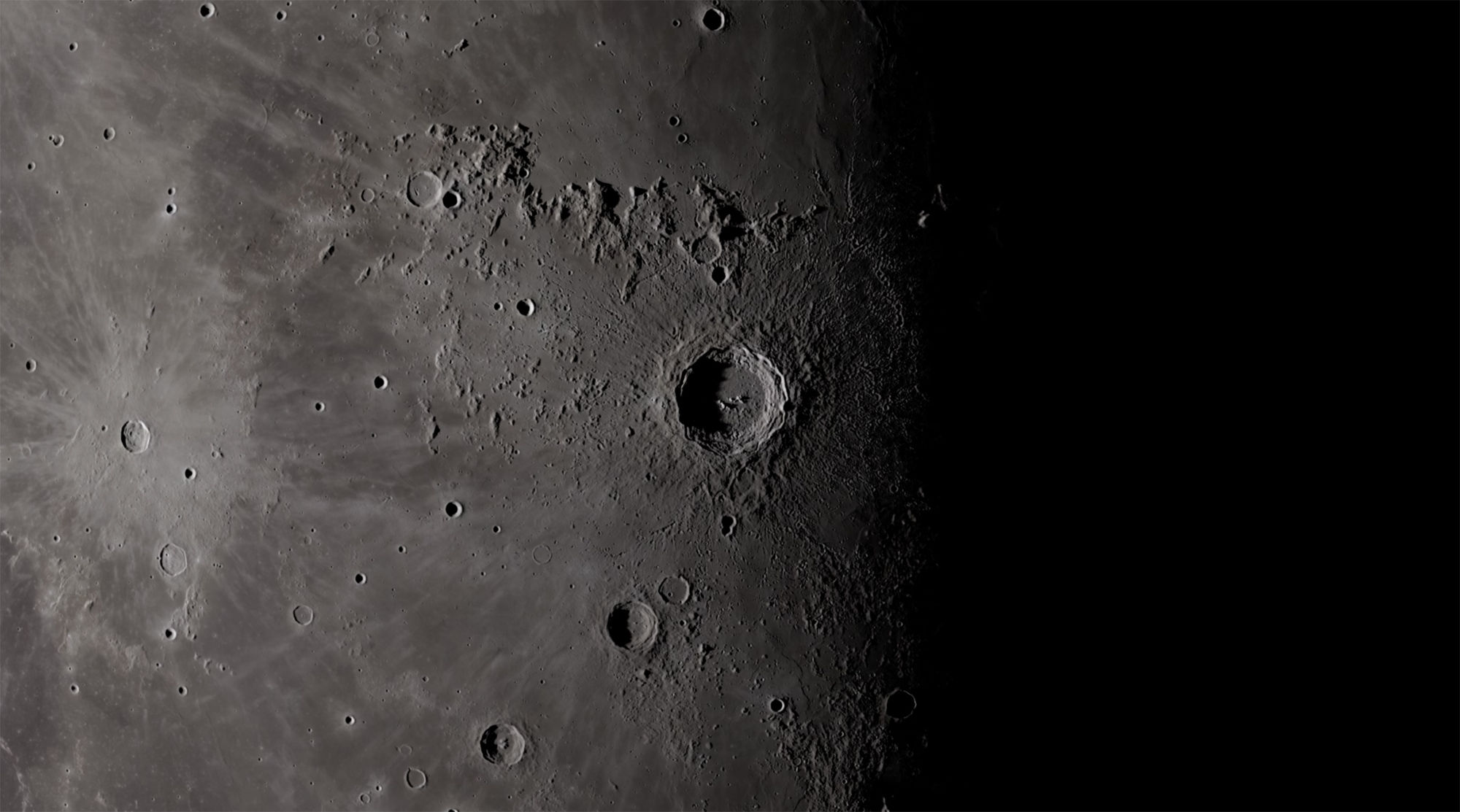Create a free profile to get unlimited access to exclusive videos, sweepstakes, and more!
Clair de Lune: Watch a lush music video of lunar highlights

It's easy to think the Moon's phases are like frames of a sequence, with one jumping to the next because we only see the Moon for half the day, and tend to look at it only once or twice when it's up.
But what we see as phases is a progression of sunlight and shadows that move across the face of the Moon so slowly that they only appear static; in fact this is a continuous motion that is produced by geometry and perspective.
I have never seen a better example of this than a new music video created by the wonderful team of people at the NASA/Goddard Space Flight Center's Scientific Visualization Studio. Using data from the Lunar Reconnaissance Orbiter, they took topographical (elevation) measurements and combined them with actual imagery to calculate shadow angles, and created a lovely animation of the changing patterns on sunlight on the Moon.
Even better? They set it to Claude Debussy's "Clair de Lune," in my opinion (and that of, oh, say, a billion or two other people) one of the most beautiful pieces of classical music ever written. The result is gorgeous, lush, and absolutely mesmerizing:
It opens with a wide angle shot of the new Moon, the thinnest of arcs burgeoning rapidly (though really it takes several days of actual time) to a waxing crescent. It then shows Mare Nectaris, a dark lava-filled basin about 340 kilometers across (seen from Earth, it forms one of the ears of "the rabbit on the Moon"). Three huge craters border it to the upper left: Theophilus, Cyrillus, and Catharina. Our point of view hovering over this location, the Sun appears to rise and the shadows filling the craters shorten, giving us a taste of the changing illumination.
The rest of the scenes show mountain ranges (caused not by tectonics as on Earth, but instead long, arcing ridges thrown up by massive impacts), the north pole, craters large and small, and the weirdly mare-less lunar far side, saturated with craters. Each scene is depicted separately and labeled on the NASA/GSFC/SVS page for the video. I recommend looking that over!
I think my favorite part starts at 3:45, which shows sunset on the iconic Copernicus crater (one I love seeing through my own telescope; easy to spot since it's nearly a hundred kilometers across and stands out in its isolated position in Oceanus Procellarum, a huge dark ocean of basaltic lava). You can see the shadows from the crater rim on the floor lengthen from left to right as the terminator (the line between day and night on the surface) moves from right to left. The contrasting motion is striking.
That motion is repeated at Aristarchus crater in the next scene, this time with hills, rilles (channels carved by flowing lava), and other features adding their own punctuation to the motion. It's just lovely.
The use of a fixed camera angle here was artfully chosen, highlighting the landscape and the motion of the shadows themselves over using a scanning technique to make it look like we're orbiting. That puts the focus where it should be, not on our own viewpoint but on the surface below.
After watching this, you'll see the Moon for what it is: a world, a place that may seem frozen in time but in fact offers us a new face every moment we choose to gaze upon it. That is how countless astronomers and planetary scientists see it, and I'm glad for the opportunity for everyone to share in this experience.
[Tip o' the lens cap to Boing Boing.]


























